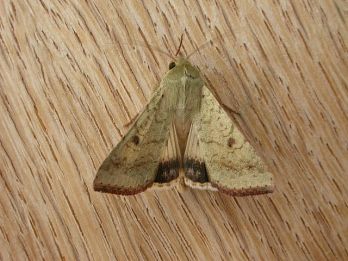Tomato grub
The tomato grub (Helicoverpa armigera), also known as tomato budworm or corn earworm, is a major pest affecting a range of host plants.
Background
Tomato grubs are similar to other noctuid caterpillars and commonly found over the plant canopy. When feeding, they like to be protected and tend to hide in foliage or burrow into the fruit.
Eggs are parasitised by Trichogramma and Telenomus spp. Larvae are parasitised by a range of wasps (Microplitis spp., Cotesia spp.). Both eggs and larvae are fed upon by generalist predators, including bugs, wasps, beetles, and spiders.
Impacts
This species is known for damaging tomato, capsicum, chilli, and eggplant. It also targets beans, lettuce, sweet corn, field crops, and weeds. The tomato grub is not a disease vector.
Heliothis larvae can feed on leaves, defoliating and killing plants at the seedling stage. They also chew through fruit, causing blemishes and creating entry holes for disease and rots.
Management
To control tomato grub damage:
- monitor moth activity using light and pheromone traps
- visually check leaves for eggs, larvae, beneficial activity and feeding damage
- in small plantings, physically remove eggs and larvae
- cultivate soil to a depth of 10cm or perform ‘pupae busting’ after harvest, to help reduce carryover between crops.
For severe infestations, use foliar and systemic insecticides, with applications timed for egg hatch and first-instar larvae.
Choose chemistries such as Bacillus thuringiensis (Bt), or the Helicoverpa-specific nuclear polyhedrosis virus (NPV), to minimise harm to lepidopteran and other pest predators. Note that tomato grubs have developed resistance to pyrethroid and carbamate insecticides.
Identification
The eggs are white domes with ribs about 1mm in diameter. As the embryo develops, the egg changes colour to yellow, then orange and brown just before hatching.
Newly emerged larvae are 1.5mm long, hairy, and cream in colour, with a dark-brown head. Older larvae can be green, pink, buff or brown. Larvae have distinct lateral (side) stripes and visible hairs.
The adult moth (Helicoverpa punctigera) colour can vary. Forewings are buff to reddish brown with darker markings. Hindwings are pale grey with a dark band along the lower edge.



